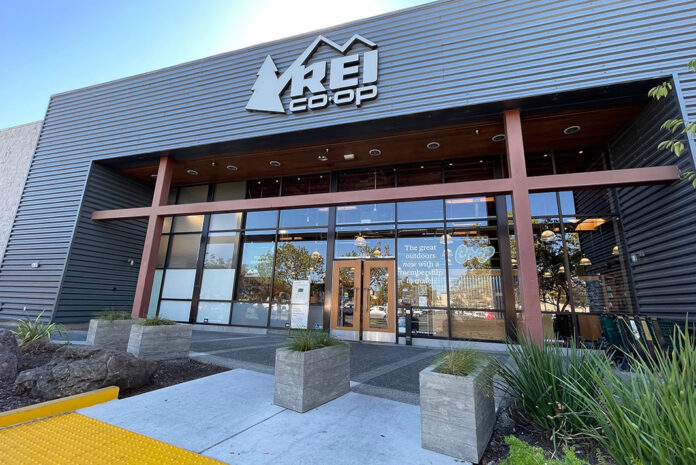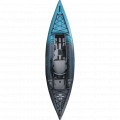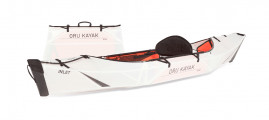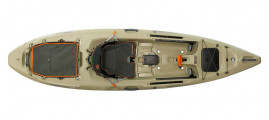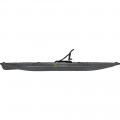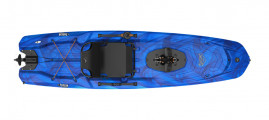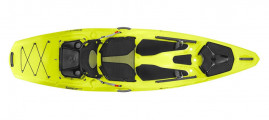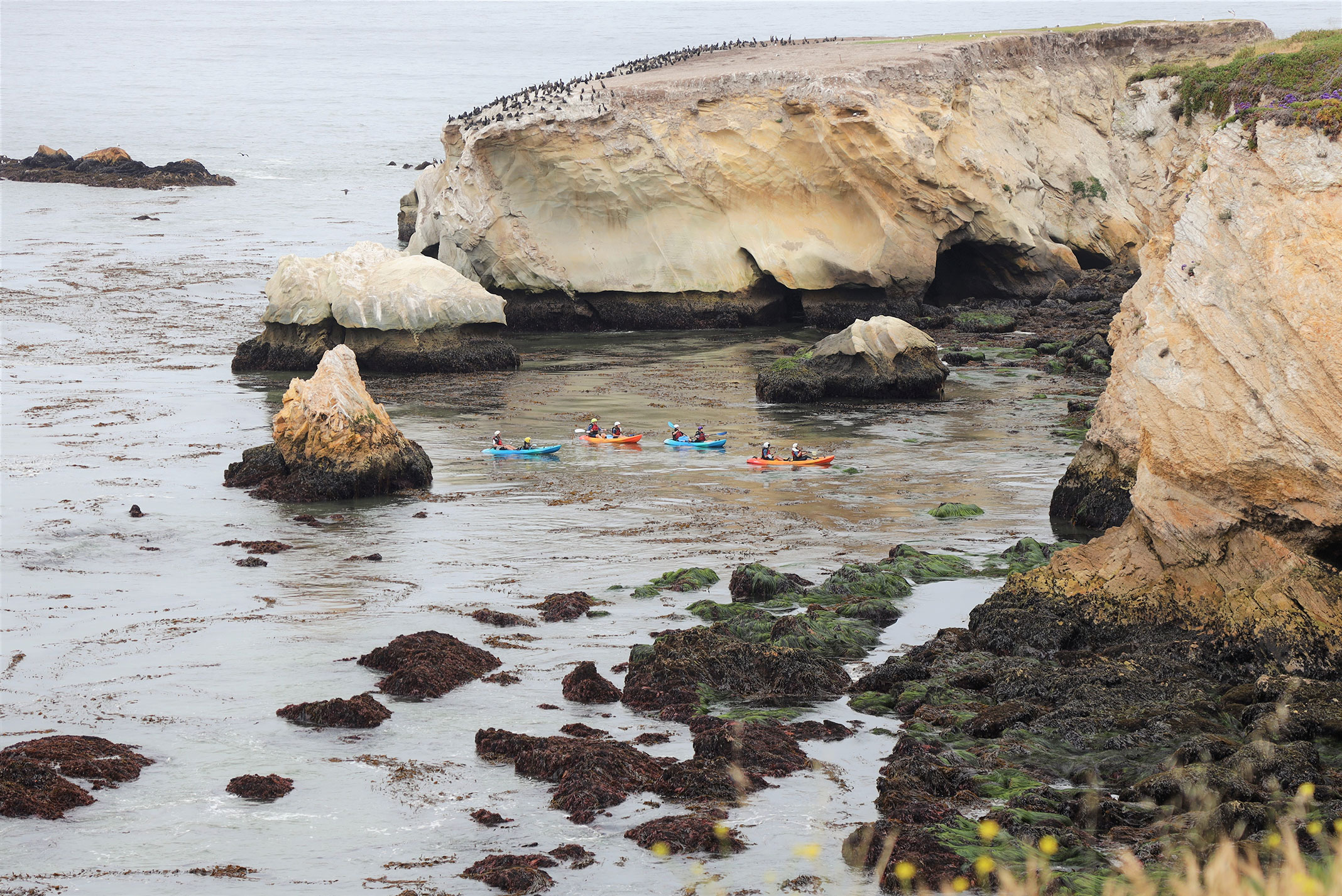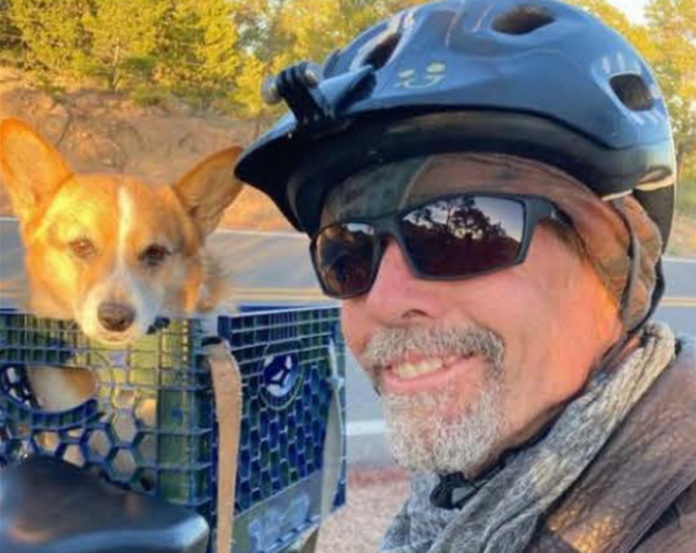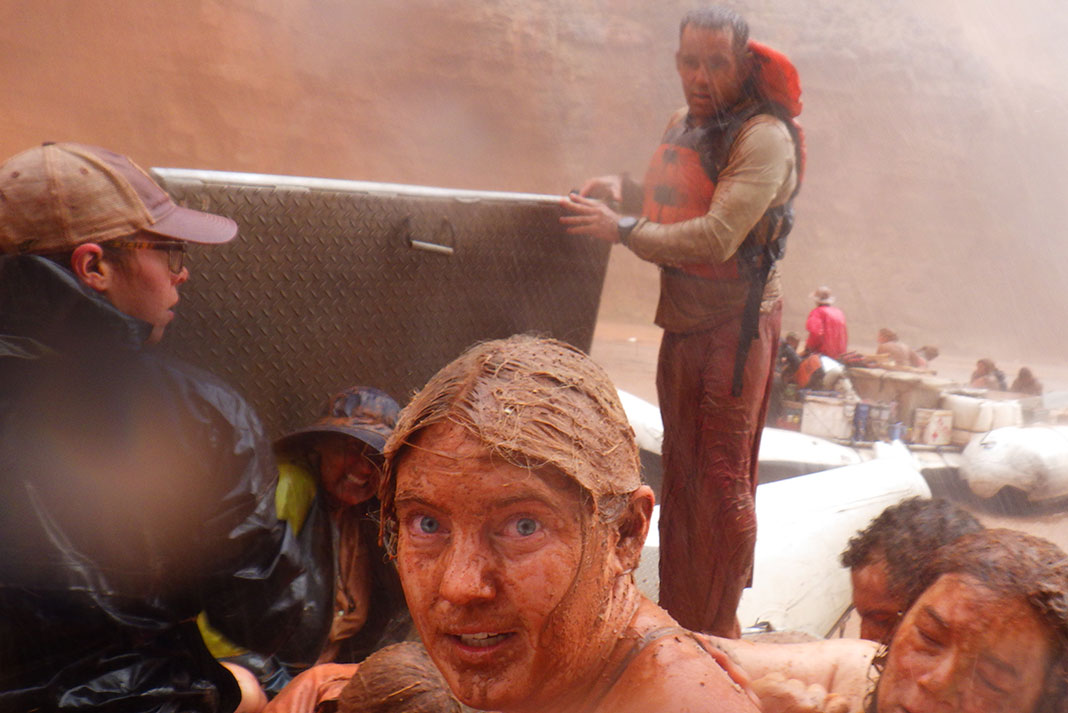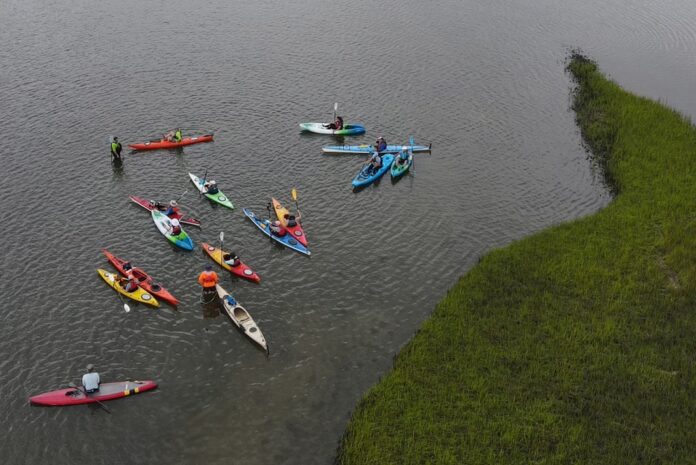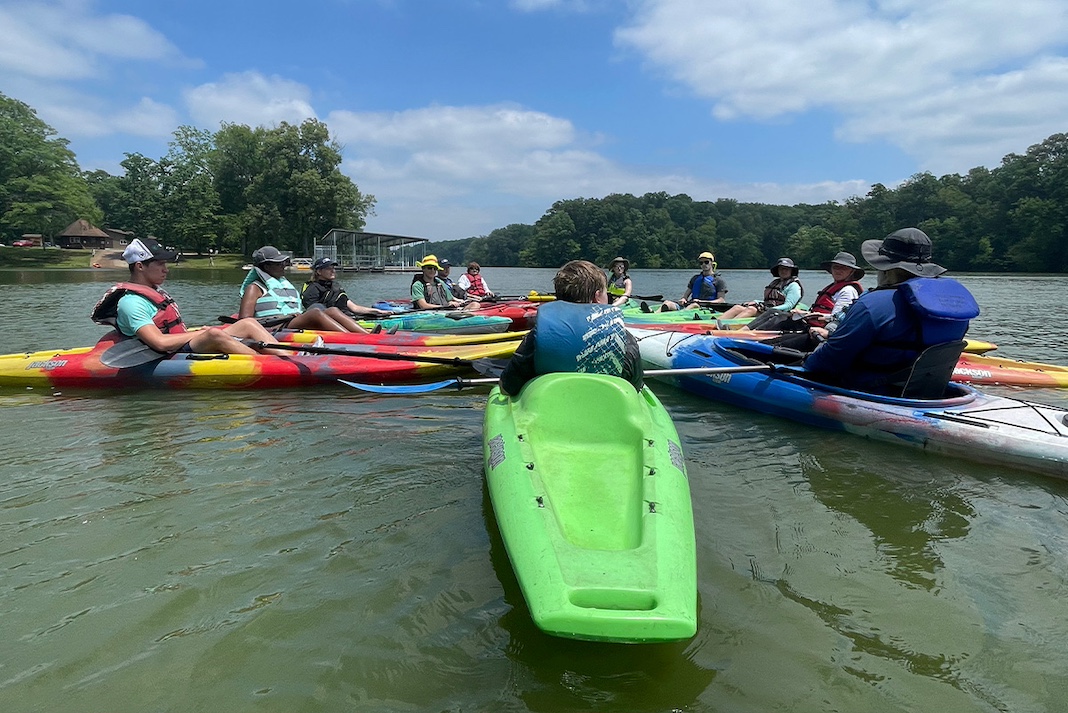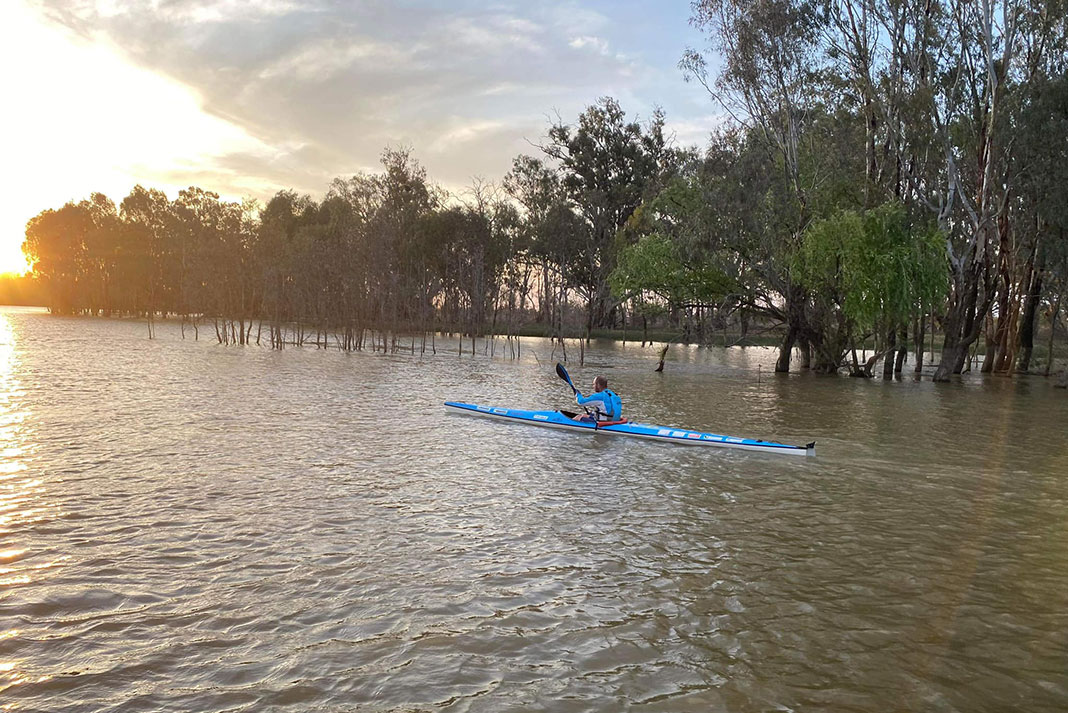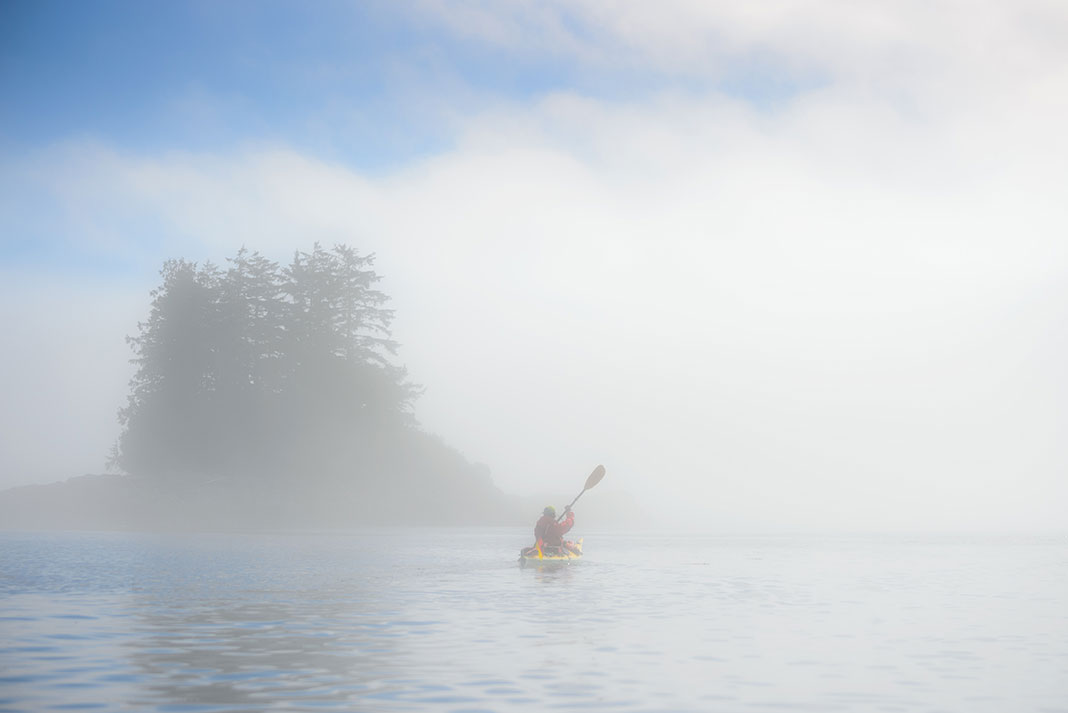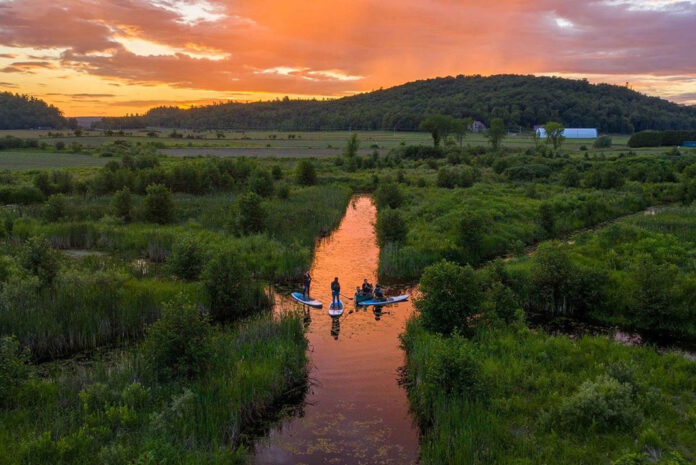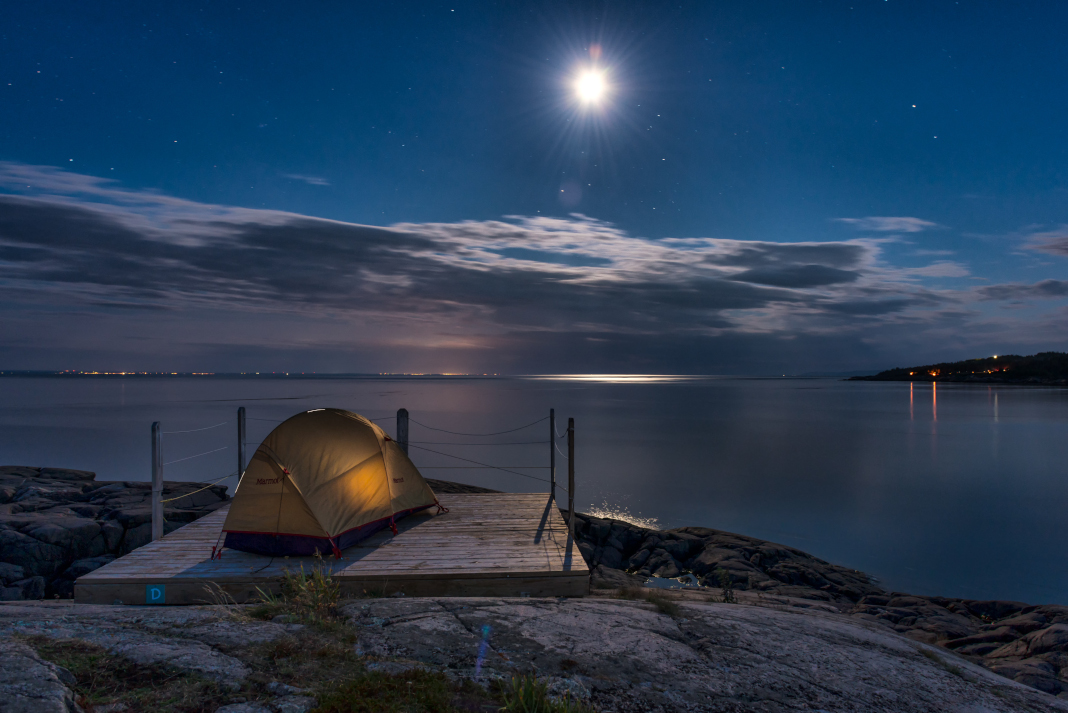Man And Dog Missing In Grand Canyon
The National Park Service (NPS) is searching for a missing man and his dog in the Grand Canyon and believes the pair may have launched on the Colorado River on a homemade raft. On April 21, 2024, the NPS located a presumably abandoned Toyota Tacoma belonging to Thomas Lee Robison of Santa Fe, New Mexico, at Lees Ferry, the launch point used for the majority of paddlers embarking on a Grand Canyon river trip. In a press release, the Park Service published images of Robison, 58, and his 11-year-old Welsh corgi, along with a photo of the homemade wooden raft. Neither have been seen as of this writing on April 29.
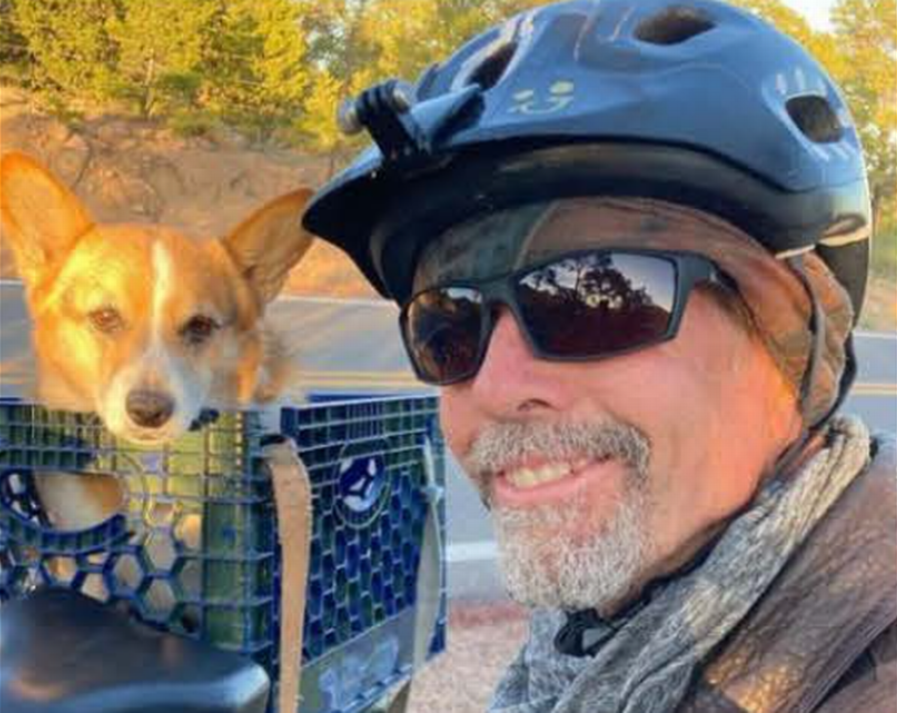
Robison and his corgi missing in the Grand Canyon
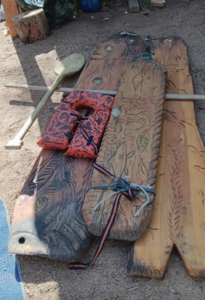
In an interview with Arizona’s Family (KTVK/KPHO), Grand Canyon National Park Service public affairs officer Joëlle Baird stated Robison did not have a permit to launch on the river. Baird also shared, “This is not a type of watercraft or vessel we would recommend,” in reference to the homemade wooden raft seen in the photo, which appears to be little more than three planks of lumber etched with artistic detail and lashed together with rope.
Along with securing a permit, the Park Service requires all paddlers to carry certain equipment and attend an orientation prior to launching on the river. Other items, including a satellite phone, are recommended by the park. It hasn’t been stated whether it’s believed Robison had any of the required or recommended equipment, or even whether he had adequate technical apparel for the cold water of the Colorado.
In the image, you can see an orange, rectangular Type II life jacket with a single buckle, similar to the type associated with being stowed away on a motorboat. This type of life jacket, while providing ample flotation, does little to stay secure on an individual in the thrashing high-volume rapids of this section of the Colorado River. The Park Service requires paddlers to use a Type I, III or V PFD in the Grand Canyon.
The day Robison’s truck was reported, the Colorado River at Lees Ferry peaked at a volume of 11,400 cubic feet per second (cfs) and has reached over 12,000 cfs each day since—with a water temperature hovering around 50 degrees Fahrenheit. The river flow is around average if not below its mean flow this time of year.
Difficulties of rescue in the Grand Canyon
Permits, awarded through a lottery, are required to paddle through the Grand Canyon, both as a means of regulating impact in the corridor, as well as allowing the Park Service to monitor who is currently within the remote 280-mile class IV stretch of the Colorado.

The Park Service receives more than 300 rescue calls a year with a third of these being river users. The rugged and remote nature of the Canyon requires most rescues to be made by helicopter.
Up to 10 trips a day launch from Lees Ferry, which amounts to more than 20,000 paddlers a year. The day Robison’s truck was discovered, around 50 people launched. A similar number the day before and in the days since have embarked on the three-week river trip, and yet there has been no sign of the missing man or his dog in the Grand Canyon.
Robison is described as a white male, 5’10” in height and 160 pounds with brown hair and hazel eyes.
Anyone who may have seen Thomas Robison are asked to contact Grand Canyon Dispatch at 928-638-7805.
17 Most Captivating Places To Paddleboard In Québec
The options for places to paddleboard in Québec are virtually endless. From the big waters of the St. Lawrence to gem-like Laurentian lakes, urban waterfronts and crystalline rivers, there’s truly something for everyone. Such a diversity of waters, combined with opportunities to encounter incredible wildlife—including whales, aquatic mammals, birds and more—and the province’s rich culture and unique cuisine, makes paddleboarding in Québec a superlative experience worthy of any traveler’s bucket list.
Here are suggestions for where to paddleboard in Québec, showcasing the many parks and outfitters that make it easy to plan a trip.
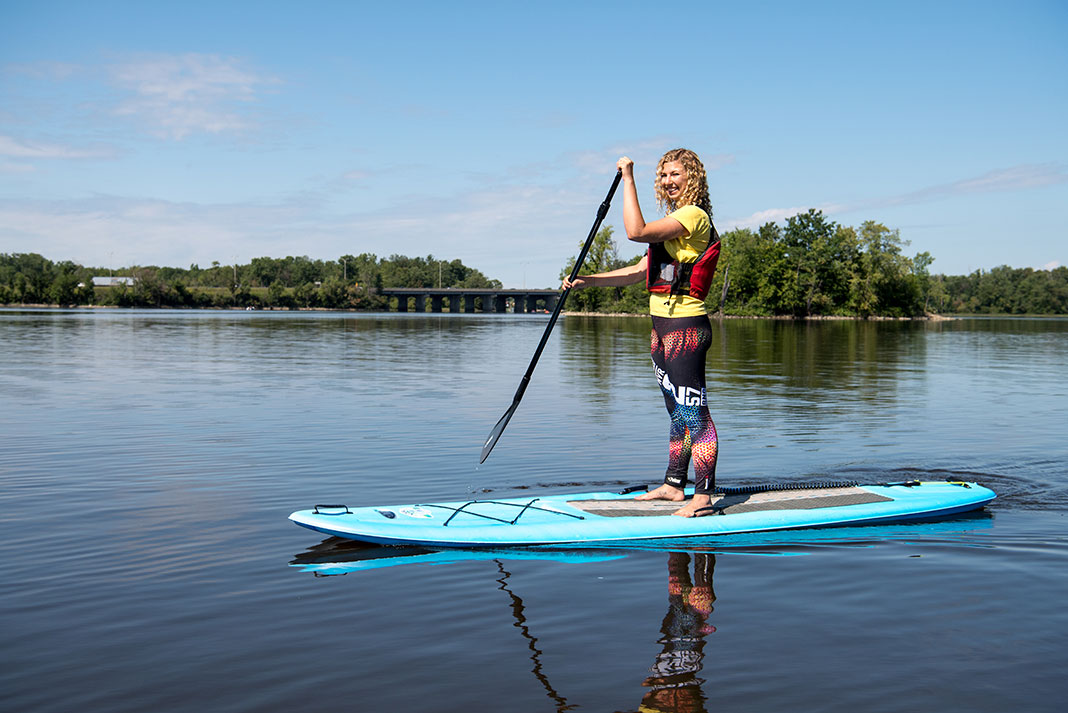
1 Parc de la Rivière-des-Mille-Îles, Laval
Laval’s Parc de la Rivière-des-Mille-Îles easily ranks among the best places to paddleboard in Québec. Glide through a peaceful haven of biodiversity, exploring the islands, backwaters and marshes—all part of the largest protected area in Montréal. Several launch sites with SUP rental options are available, including Rue Hubert-Aquin in Boisbriand, Boulevard Sainte-Rose in Laval, 25e Avenue in Saint-Eustache and Rue Charbonneau in Rosemere. KSF is the premier outfitter to help you find great paddling adventures in Montréal, including SUP yoga and surfing.

2 Matapedia River, Bas-Saint-Laurent
The Matapedia is an incredible river that separates Québec’s Bas-Saint-Laurent and Gaspésie regions. Its crystalline waters are fringed by lush forests, making it an ideal destination for paddleboarding. Nature Aventure is your go-to outfitter for more information about the Matapedia River and nearby Restigouche River; check them out for rentals and vehicle shuttles for eight- and 10-kilometer-long downriver trips.
- Also in Bas-Saint-Laurent, check out Aventures Archipel in Rimouski to explore Parc National du Bic on the St. Lawrence River
- La Coop Kayaks des Îles offers SUP rentals on the St. Lawrence in Trois-Pistoles
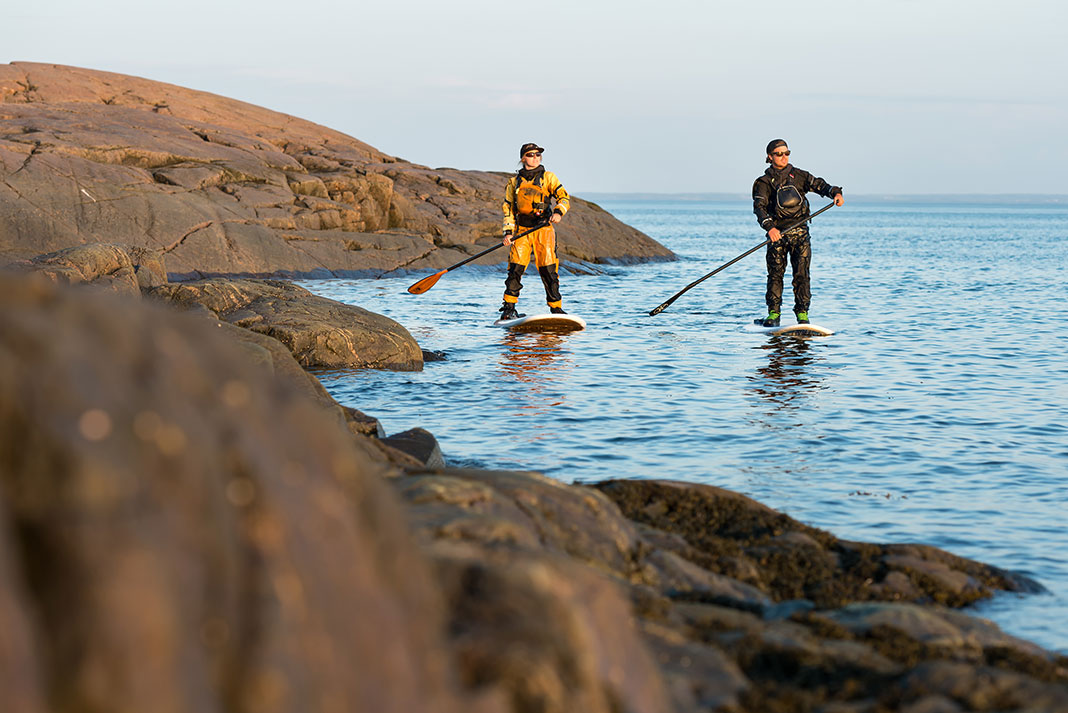
3 Tadoussac, Côte-Nord
Along the St. Lawrence River between Tadoussac and Les Escoumins, paddlers can encounter a multitude of marine mammals in nearshore waters, including fin, blue, minke and humpback whales, and two species of seals. Mer et Monde Écotours offers drive-in campsites, chalets and condos near the water’s edge, as well as SUP rentals and the local knowledge to experience these dynamic waters safely. The outfitter’s launch in Bergeronnes gives you immediate access to the rich biodiversity of the Saguenay-St. Lawrence Marine Park.

4 Bonaventure River, Gaspésie
Located at the eastern tip of Canada’s mainland, Québec’s Gaspésie region is a world apart in so many ways. The area is renowned for its culture, cuisine and nature; and with plenty of fresh- and saltwater, it easily ranks amongst the best places to paddleboard in Québec. The Bonaventure River features incredible crystalline waters and steep, scenic shores. Rent a paddleboard from Cime Aventures for a downriver day trip and camp at the outfitter’s outdoor resort.
- Based in the small community of Carleton-sur-mer, Écovoile Baie-des-Chaleurs rents paddleboards on the southern coast of the Gaspé Peninsula, where you can explore the relatively warm, sheltered waters of the Baie-des-Chaleurs
- Cap Aventure offers paddleboard rentals and guided tours on the coast in Forillon National Park, where you may see whales and a variety of marine life
- Check out Camp de Base Gaspésie to rent a board to paddle stunning beaches and see the iconic Roche Percé formation. Three-hour rentals and sunset guided tours are available. The company also offers accommodations, a restaurant and a spa.
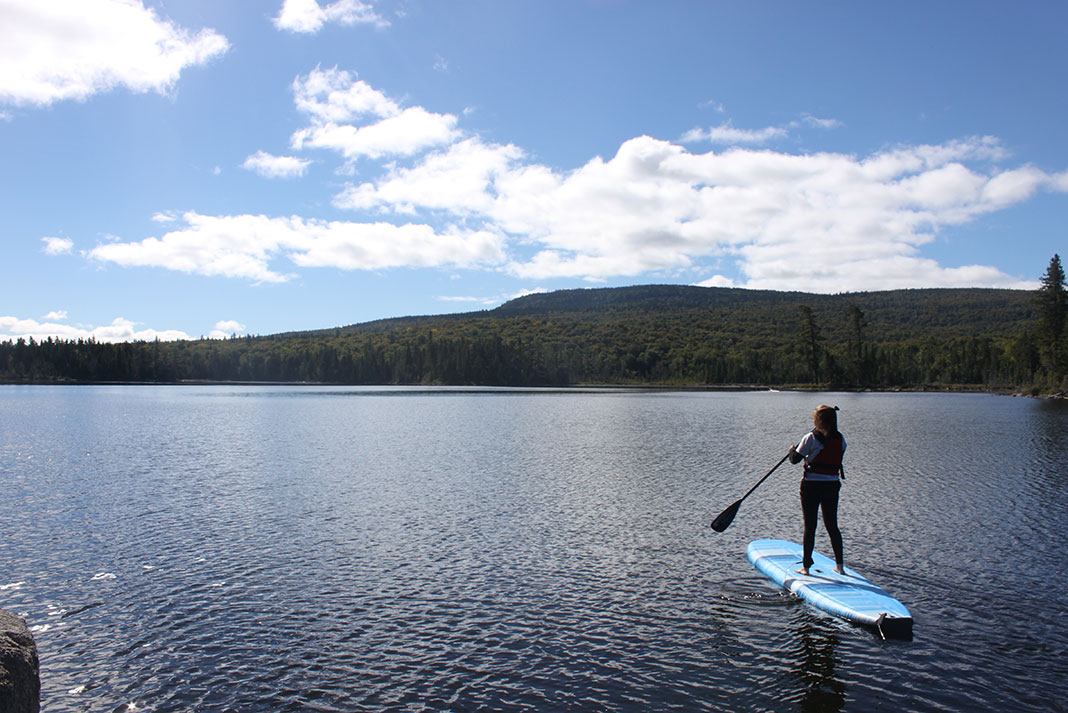
5 Parc régional Montagne du Diable, Laurentians
Juna Académie is your gateway to discovering yoga and paddleboarding Québec’s Parc régional Montagne du Diable, in the Laurentian region, three hours north of Montréal. The company offers SUP yoga classes on scenic Laurentian lakes, as well as comprehensive yoga instructor training. Montagne du Diable is a fantastic destination for multisport outdoor adventures, with camping, lean-to and tiny home rentals available on Windigo Lake, and paddleboards to rent at Le Village des Bâtisseurs.
- Elsewhere in the Laurentians, Parc régional du Poisson Blanc is your gateway to explore Lac Poisson Blanc, near Notre-Dame-du-Laus, about 90 minutes north of Ottawa. From the launch site at the north end of the lake, experienced paddleboarders can set off on overnight wilderness trips. Be sure to reserve your island campsite in advance of departure.

6 Parc Nature Éco-Odyssée, Outaouais
Between the jewel-like lakes of Gatineau Park, the Gatineau River and so much more, the Outaouais region is hard to beat for paddleboarders in Québec. Check out the wetland maze at Parc Nature Éco-Odyssée for a truly unique paddleboarding experience. The company rents SUPs so you can explore five kilometers of “water labyrinth,” about 30 minutes north of Ottawa, near the picturesque community of Wakefield.
- CarpeDiem Aventures offers distinctive accommodations and paddleboard rentals on Lac Blue Sea, an aptly named expanse of freshwater located about an hour north of Ottawa
- There’s plenty of paddling in Gatineau Park, including Lac Philippe and Lac la Pêche. Start your adventure by renting a paddleboard from Nomades du Parc.
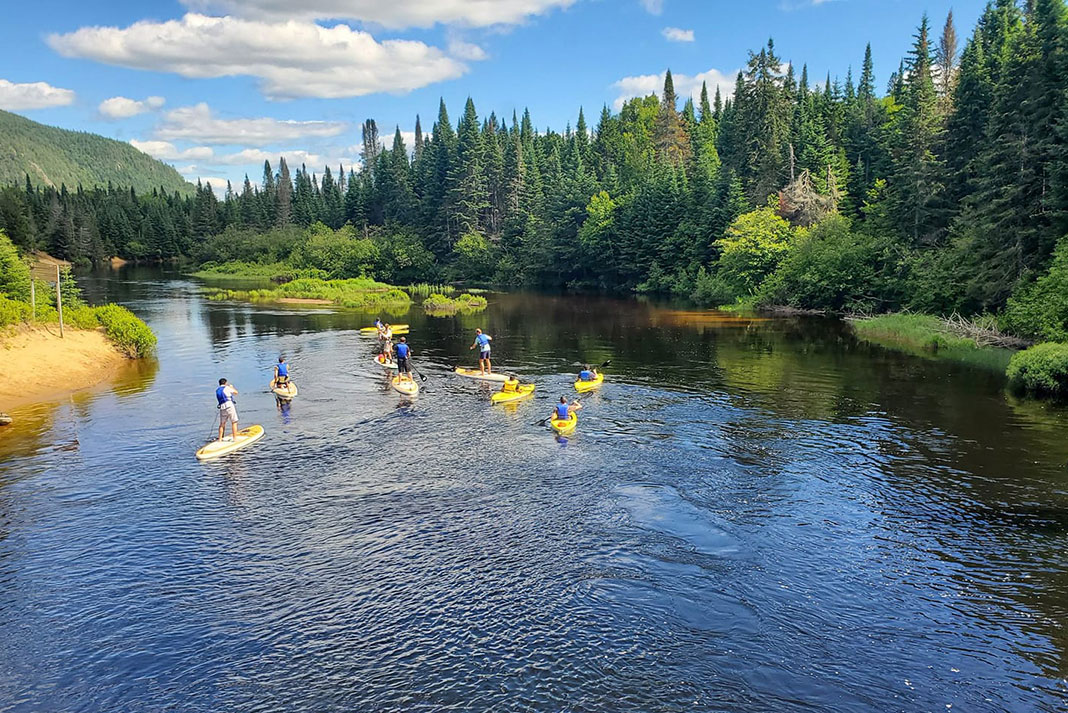
7 Parc national du Mont-Tremblant, Lanaudière
Lac Archambault is an absolute jewel on the doorstep of Parc national du Mont-Tremblant, located about two hours north of Montréal in the Lanaudière region. The quaint community of Saint-Donat is your gateway to paddleboarding on Lac Archambault. Take a guided day trip, sign up for a lesson or try SUP yoga with Time’sup Aventures.
8 Parc des Appalaches, Chaudière-Appalaches
This hidden gem on the south side of the St. Lawrence in the Chaudière-Appalaches region, 150 kilometers east of Québec City, features mountains, rivers, lakes and verdant hardwood forests. You can rent a SUP at the Parc des Appalaches office in Sainte-Lucie-de-Beauregard. The main attraction for paddleboarding is a 14-kilometer flatwater journey on the Rivière Noire Nord-Ouest, starting from Lac-Frontière. This river was once used by log drivers and has since been reclaimed by loons, ducks and many aquatic mammals, making it a great choice for paddlers looking for close encounters with nature.
9 Ville-Marie, Abitibi-Témiscamingue
With vast forests and countless rivers and lakes, Abitibi-Témiscamingue is a fantastic place to encounter true wilderness on a paddleboard in Québec. Ville-Marie is your gateway to explore the elongated lakes at the headwaters of the Ottawa River, including Lake Temiskaming’s east shore, ZEC Kipawa and more. La Coop de l’Arrière-Pays offers SUP rentals and all the local knowledge you need to check out this vast region for yourself.
10 Saguenay Fjord, Saguenay-Lac-Saint-Jean
The Rivière Saguenay flows like a liquid conveyor belt through a rocky gauntlet from Lac Saint-Jean to the St. Lawrence River at Tadoussac. Spectacular scenery, along with the opportunity to see beluga and minke whales, makes the Saguenay Fjord one of the best places to go paddleboarding in Québec. There are plenty of options for experienced paddlers. One suggestion for a day trip is to launch at L’Anse-de-Roche and ride the incoming tide upstream along the fjord’s steep granite walls. You can also plan an overnight backcountry SUP camping trip in Saguenay-St. Lawrence Marine Park. Check out these local outfitters to make your dream a reality:
- Fjord en Kayak offers hourly paddleboard rentals to get out on the water in L’Anse-Saint-Jean
- H20 Expédition provides SUP rentals in Lac Saint-Jean
- Équinox Aventure in Alma provides SUP rentals and training, as well as a unique self-guided package where you paddle to a remote floating cabin for an overnight stay
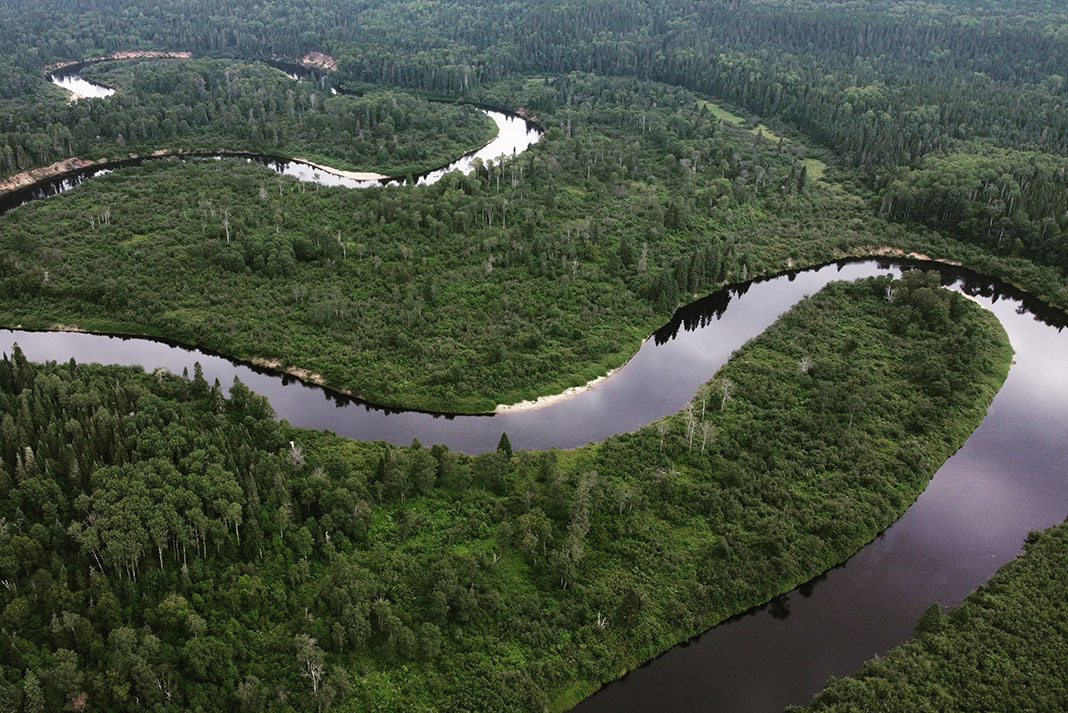
11 Rivière Croche, Mauricie
Countless rivers spill out of the Laurentian Mountains in Québec’s Mauricie region, north of Trois-Rivières. Among them, the Rivière Croche in the Haute-Mauricie region offers a peaceful downriver paddleboard day trip with stunning natural surroundings and plenty of fine-sand beaches for a picnic lunch. Méandre is based in the town of La Croche, and offers paddleboard rentals as well as accommodations.
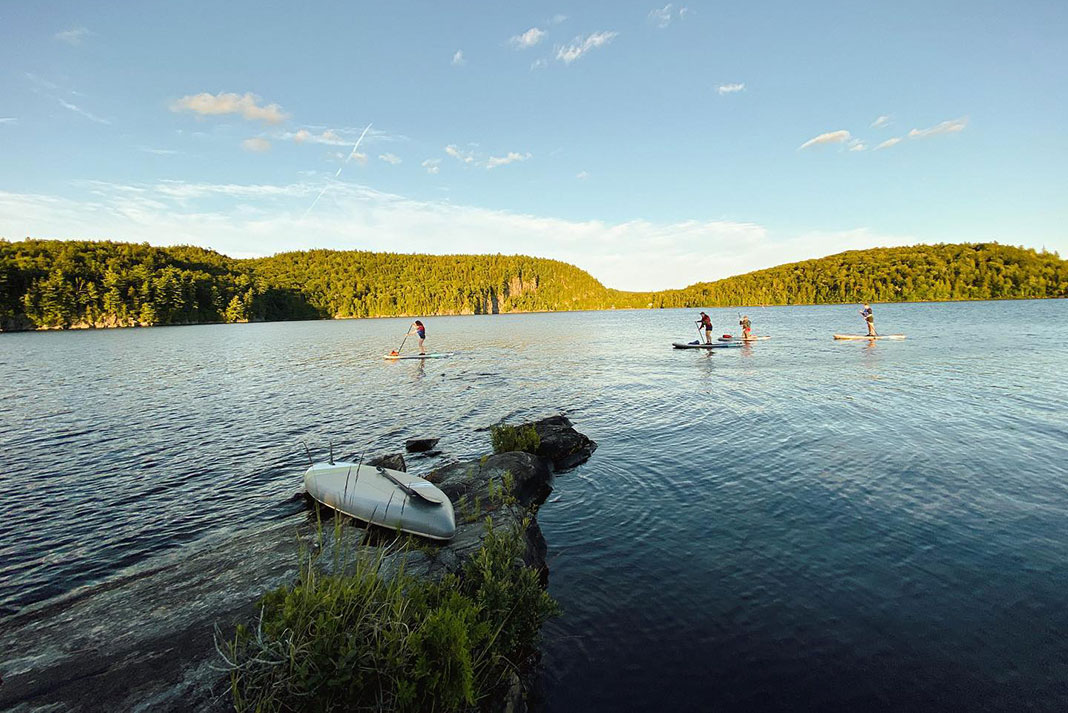
12 Lac-Beauport, Québec City
Paddleboarding with La Plage Québec is a perfect way to blend cultural and urban experiences in Québec City with a beautiful day on the water. The company offers plenty of experiences from its base on Lac-Beauport, as well as the St. Lawrence River and other local waterways, ranging from SUP rentals to water-based yoga, day trips and more.
- Experience a quintessential Québec chalet and paddleboard to your heart’s desire with a retreat at Au Chalet en Bois Rond, located in Portneuf, about 45 minutes from Québec City
- Check out Õ Pagaie for a gourmet paddleboarding adventure in Portneuf. The Floating Dinette tour allows you to SUP Lake Sept-Îles before having a picnic on shore, while the Gourmet Morning sees you heading out wit ha tasty sweet and sour snack. The SUP & Werewolf experience is a moonlit paddle followed by indulging in yummy treats by the fire.
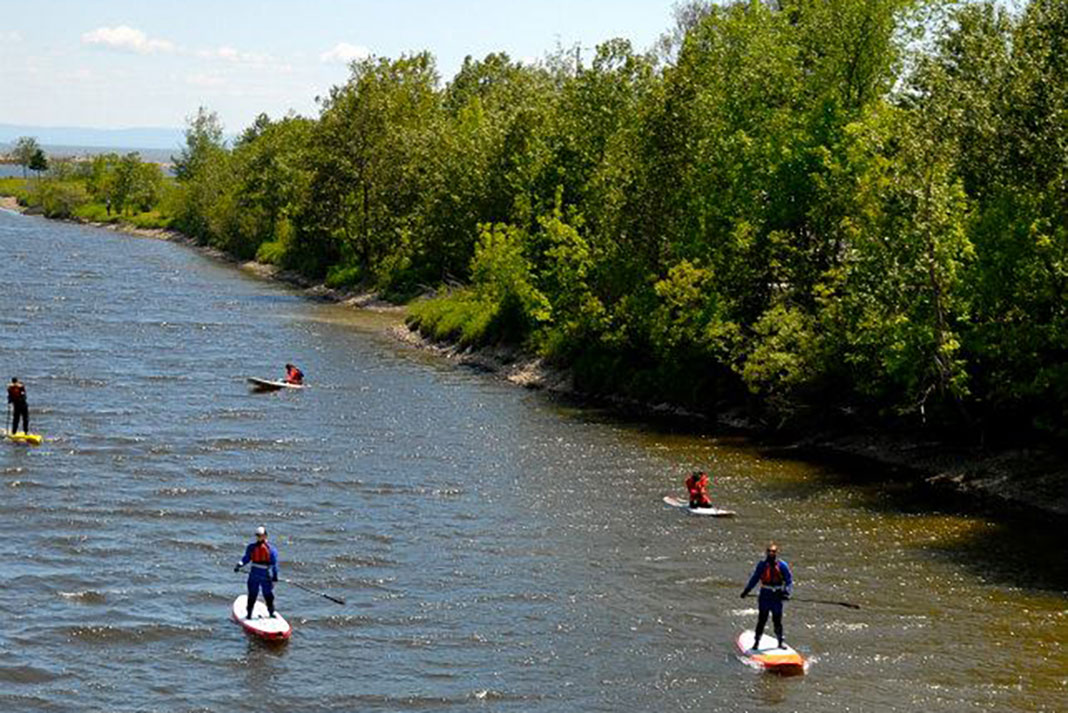
13 Baie-Saint-Paul, Charlevoix
Québec’s Charlevoix region has a distinctive “sea to sky” feeling, marked by the intersection of the rich waters of the St. Lawrence River and soaring, forest-clad mountains. It’s hard to beat the Baie-Saint-Paul area for paddleboarding in Québec. Katabatik specializes in year-round outdoor activities in Charlevoix, including paddleboard rentals so you can get out on the water for an adventure. You can launch from the historic wharf at Baie-Saint-Paul or check out the stunning sand beaches of nearby Saint-Irénée.
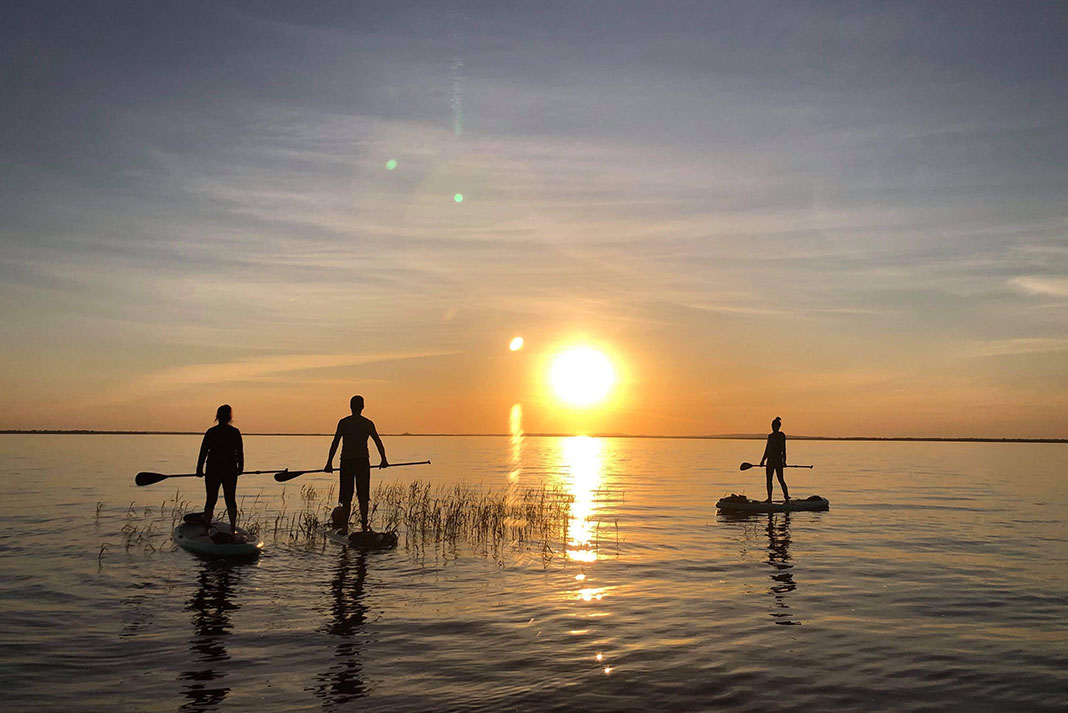
14 Lac-Saint-Louis, Montérégie
Lac-Saint-Louis in the Montérégie region marks the junction of the Ottawa and St. Lawrence rivers, with plenty of diverse shoreline features to explore by paddleboard. This body of water is renowned for its incredible sunsets and revered amongst naturalists for its excellent bird habitats. Love Sup Shop in Châteauguay is your go-to source for paddleboard adventures in this great destination.
- Prefer smaller water? Contact Kayak Safari for more information to plan a day trip on Rivière Châteauguay and Rivière-à-la-Truite, about an hour’s drive southwest of Montréal.
15 Lac-Mégantic, Eastern Townships
From its base on the east shore of Lac-Mégantic in the town of Frontenac, Surf Évasion provides a unique way to paddleboard in Québec with jetboard rentals. These electric surfboards allow you to effortlessly skim over the surface of Lac-Mégantic, discovering the magical sensation of carving surf turns, with or without waves. Warning: the feeling is thrilling and addictive!
16 Pointe-Claire, Montréal
One glimpse of a map reveals that Montréal is surrounded by water, and as a result it’s hard to find a better place to be a paddleboarder. Pointe-Claire on the West Island of Montréal is a favorite destination with good options for families, naturalists and sunset-seekers, as well as fitness paddlers. Rent a SUP from Locapaq and launch from Lakeshore Road. POP Spirit offers guided paddleboard outings, yoga and Paddle Canada-certified lessons in Pointe-Claire.
- Guepe offers a huge range of outdoor educational tours as well as paddleboard rentals in Montréal
- For an urban paddleboard adventure, rent a SUP from Aventures H2O near the Atwater Market and explore Montréal’s historic Lachine Canal

17 Parc de Gros-Cap, Îles-de-la-Madeleines
Québec’s Îles-de-la-Madeleines is a renowned destination for watersports enthusiasts. Paddleboarders can get a taste of this remote archipelago far off the coast of Gaspésie, north of Prince Edward Island, by exploring the Gulf of St. Lawrence at Parc de Gros-Cap. Here you’ll find a stunning campground by the sea and plenty of opportunities to view the picturesque Madeleines from offshore, atop your SUP.
- CindyHook Sports Aventures offers SUP rentals and guided paddleboard excursions along the Madeleines’ ocean-scoured coastline
- Besides catering to kite sport enthusiasts, Aérosport les Iles also offers paddleboard rentals in the Madeleines
To dive into Québec’s wild beauty and experience thrilling paddling and outdoor escapes, visit Québec Adventure Outdoor‘s website.
Feature photo: courtesy of Québec Adventure Outdoor (c)Parc-Nature Éco-Odyssée




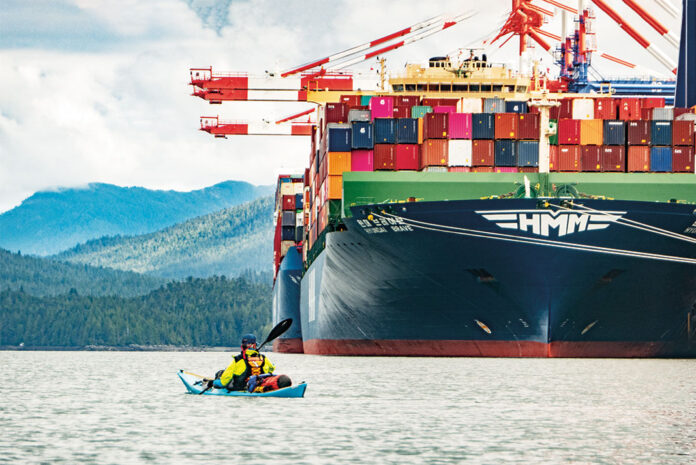

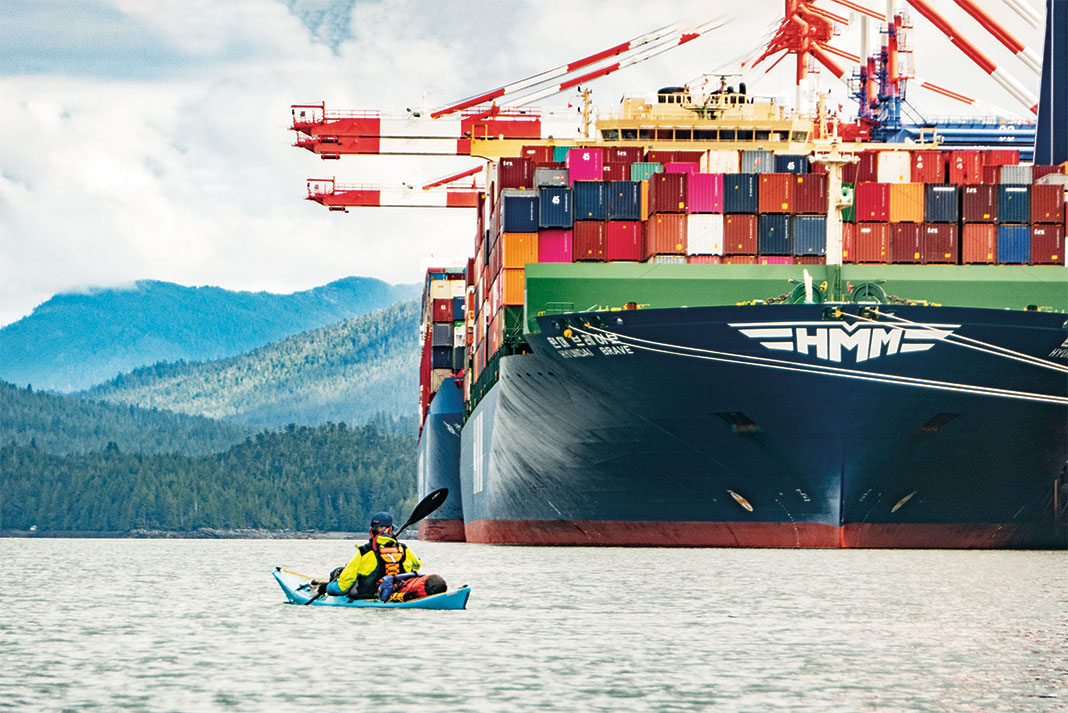
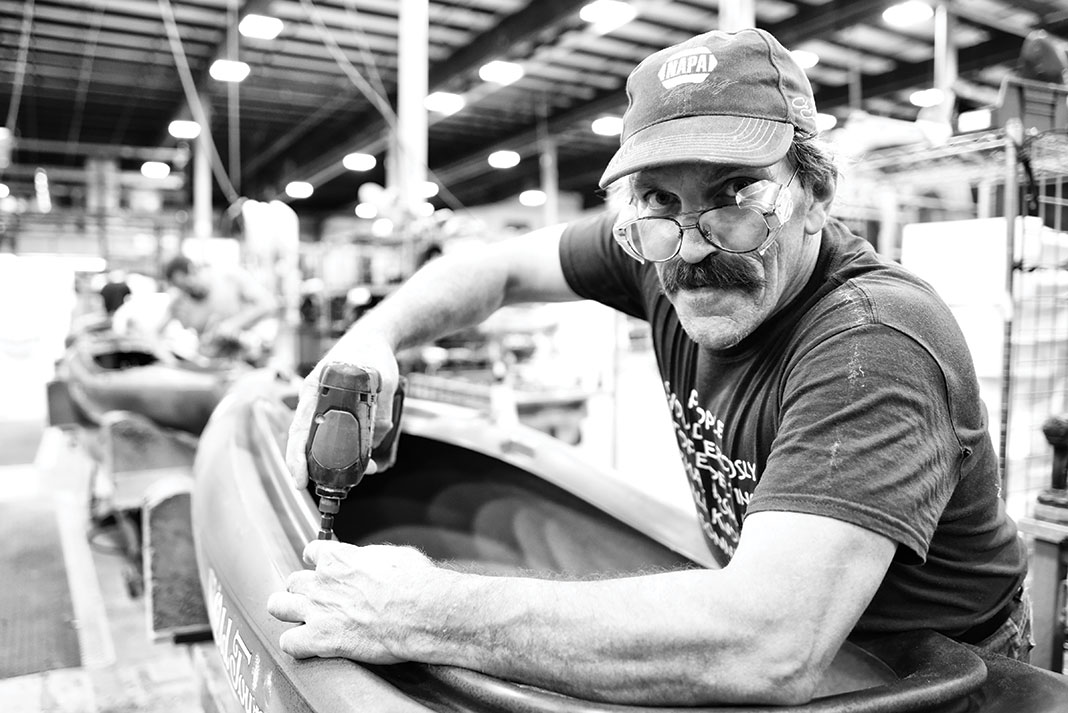
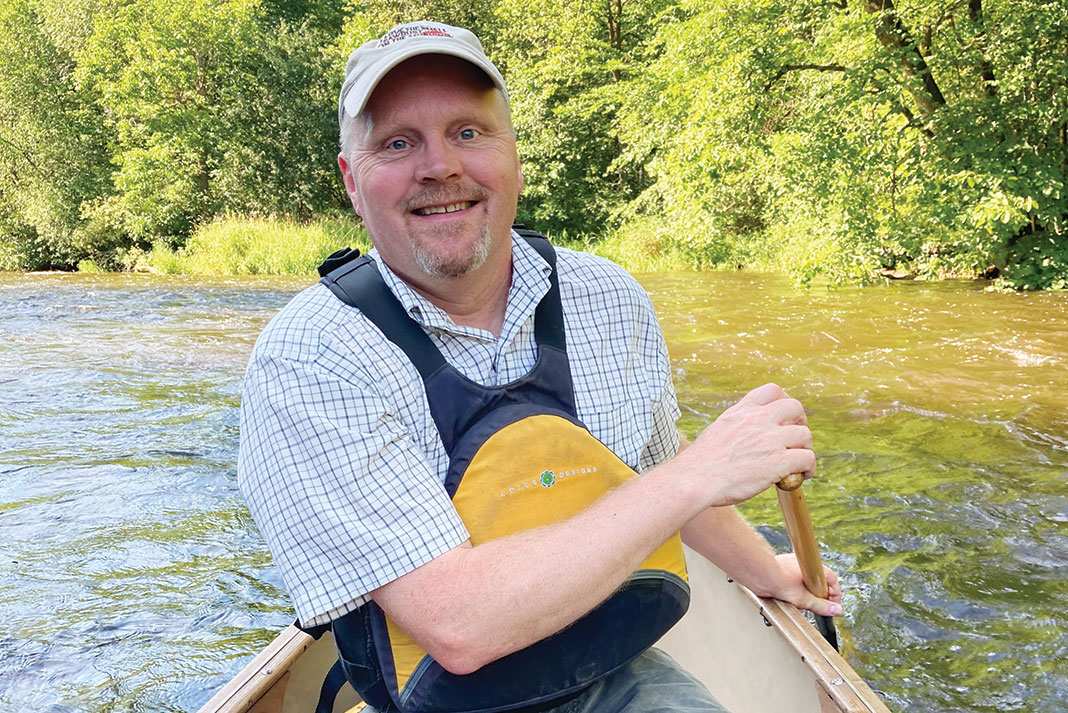
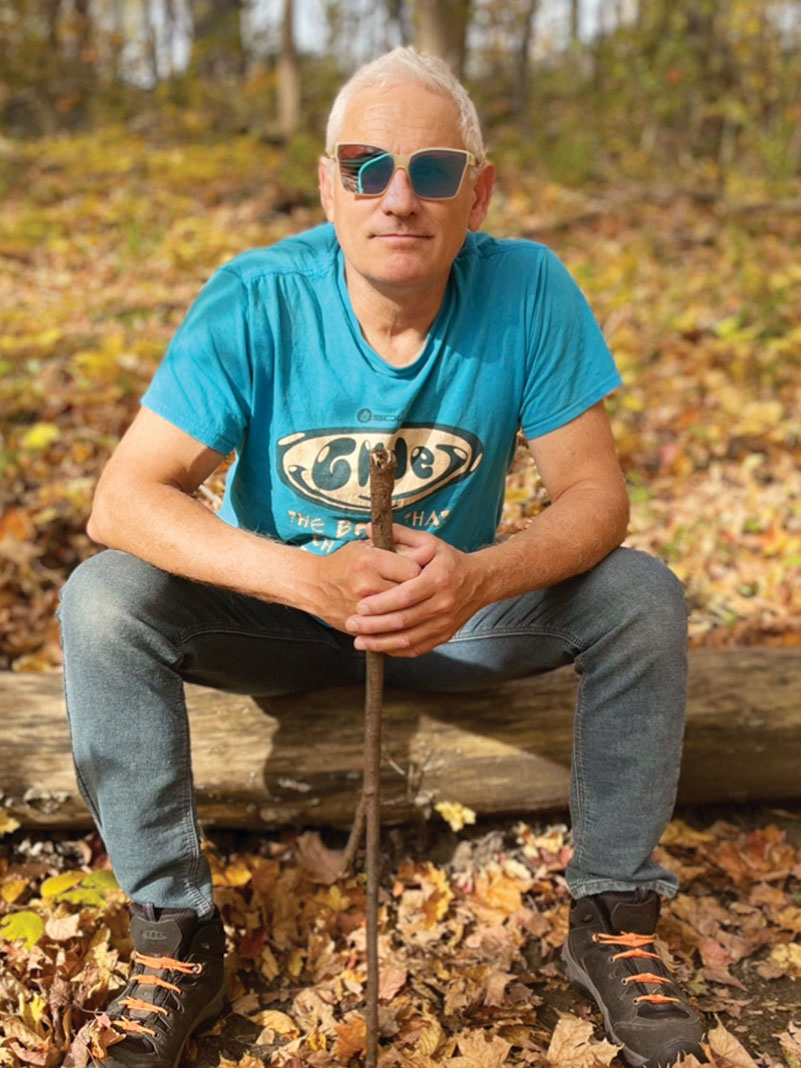
 This article was first published in the 2024 issue of Paddling Business. Inside you’ll find the year’s hottest gear for canoeing, kayaking, whitewater and paddleboarding. Plus: how to beat the big box, trends in kayak fishing instruction, building the Paddlesports Trade Coalition and more.
This article was first published in the 2024 issue of Paddling Business. Inside you’ll find the year’s hottest gear for canoeing, kayaking, whitewater and paddleboarding. Plus: how to beat the big box, trends in kayak fishing instruction, building the Paddlesports Trade Coalition and more. 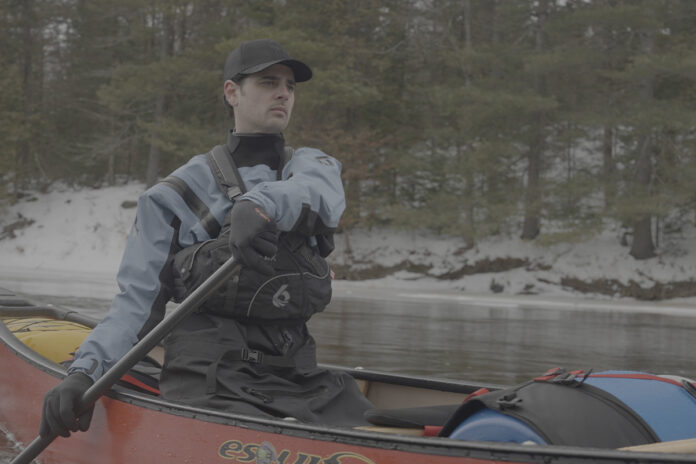

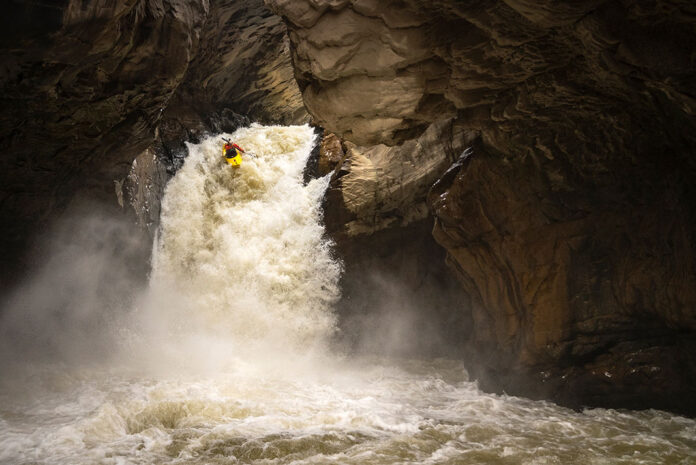
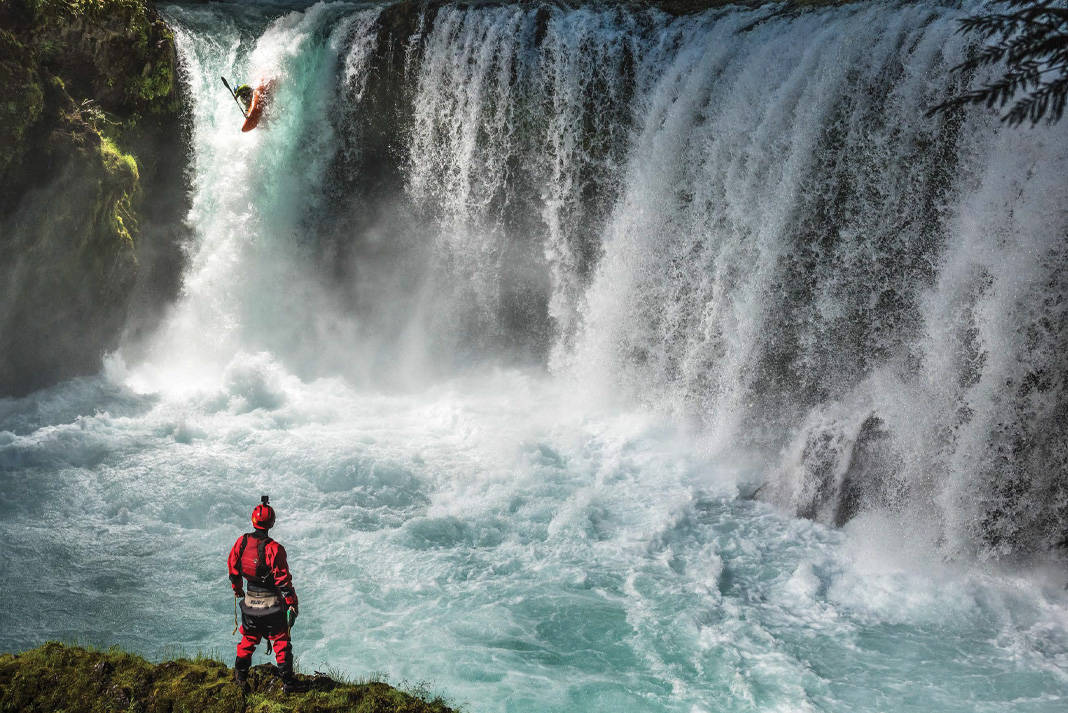
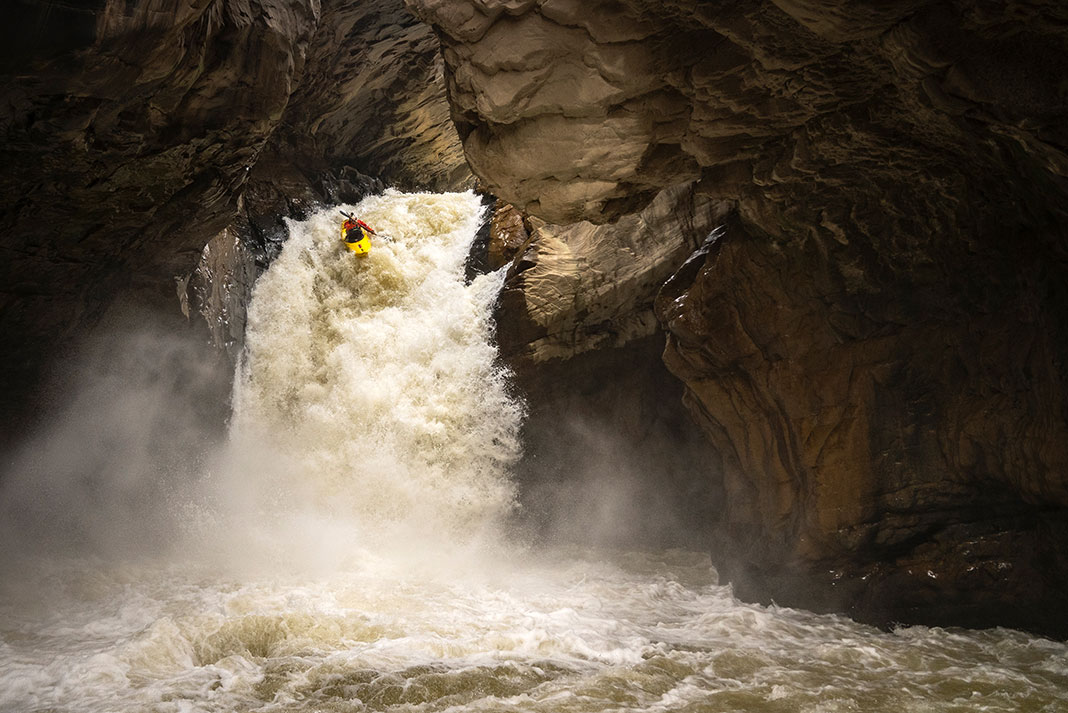
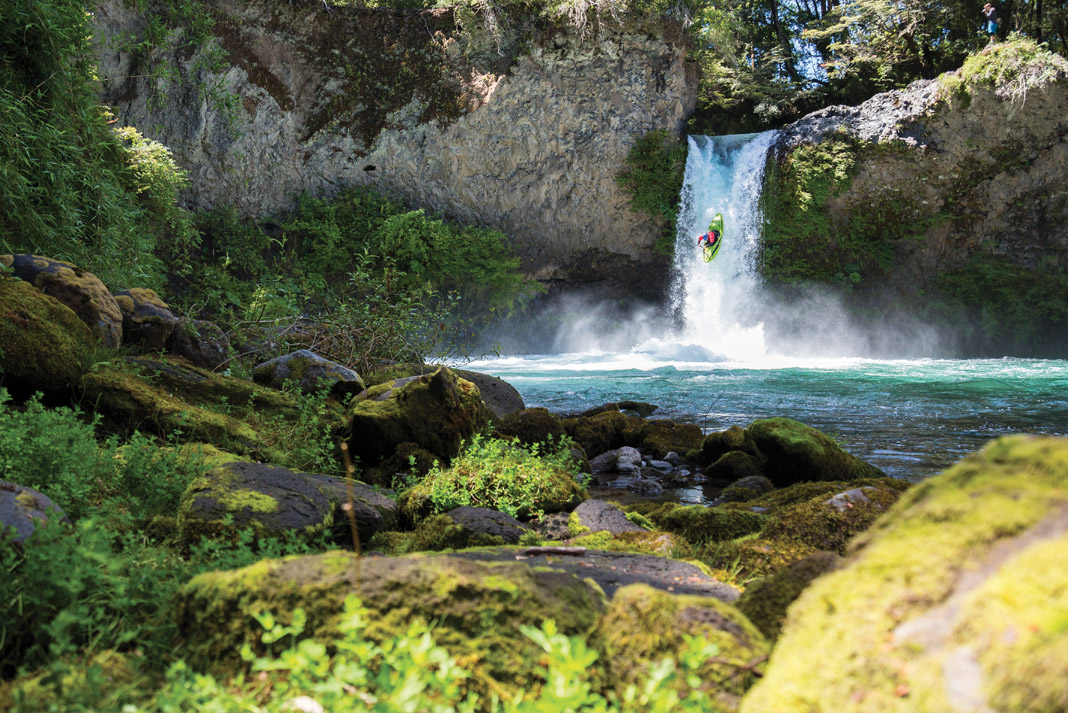
 This article was first published in the Spring 2024 issue of Paddling Magazine.
This article was first published in the Spring 2024 issue of Paddling Magazine. 